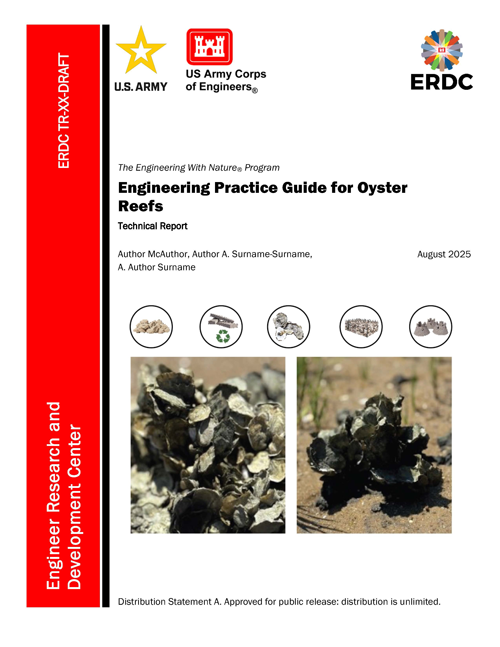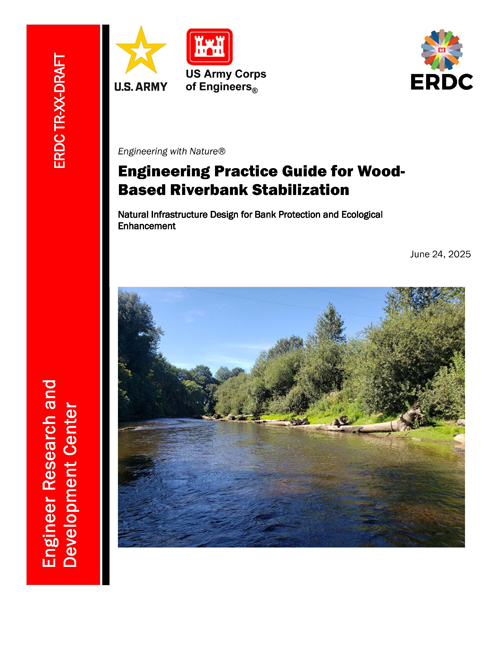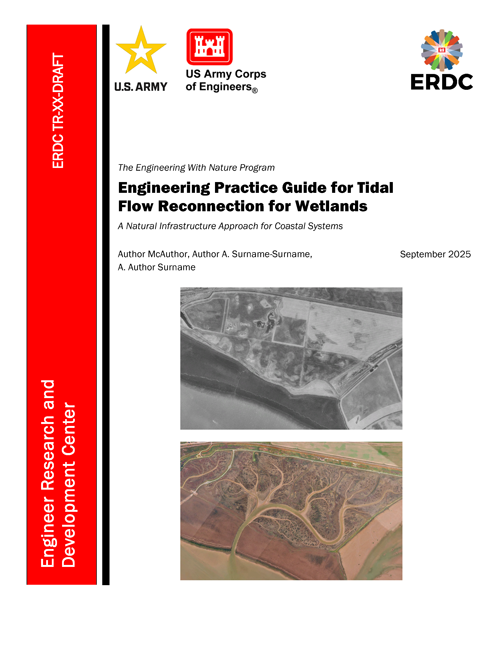This collection features technical guides for planning and design of inland and coastal water resources development projects. These guides were developed by USACE’s Engineer and Research Development Center (ERDC) in close coordination with the Engineering & Construction (E&C) Directorate to expand consideration of natural infrastructure solutions.
The fields of engineering and design have made significant advances in developing solutions for today’s complex challenges. The U.S. Army Corps of Engineers (USACE) recognizes the importance of maintaining this forward momentum. To help sustain this progress, Engineering Practice Guides are being developed that focus on the design of Natural Infrastructure (NI) solutions. While natural infrastructure has been employed for decades to achieve a variety of goals within the natural landscape, these new guides emphasize the benefits of hybrid approaches—combining traditional “gray” infrastructure with nature-based “green and blue” solutions. This integrated approach will enhance more outcomes across numerous Civil Works missions while addressing multiple objectives and mitigating potential risks.
While a robust body of technical guidance exists for conventional infrastructure, resources for Natural Infrastructure (NI) components are currently limited in both content and organization. The Engineering Practice Guides are intended to fill this gap by serving as a primary source of technical direction for NI. Their purpose is to support practitioners in designing and implementing more holistic, resilient, and sustainable projects. The guides are being developed in alignment with the Engineering With Nature (EWN) Guiding Principles and are structured to follow the standard planning process of project design.

The use of the Engineering Practice Guides has been endorsed by USACE Headquarters, Engineering & Construction Directorate, for use in the planning and design of water resources development projects. Each Guide supports the application of natural infrastructure and hybrid solutions to meet project performance objectives.
A report informing engineering activities related to site investigation and design of floodplain benches for use by engineers and ecologists to inform the design of floodplain benches in a manner consistent with and to augment other planning, design, and engineering guidance.




Engineering With Nature® is the intentional alignment of natural and engineering processes to efficiently and effectively deliver economic, ecological, and social benefits through collaboration.